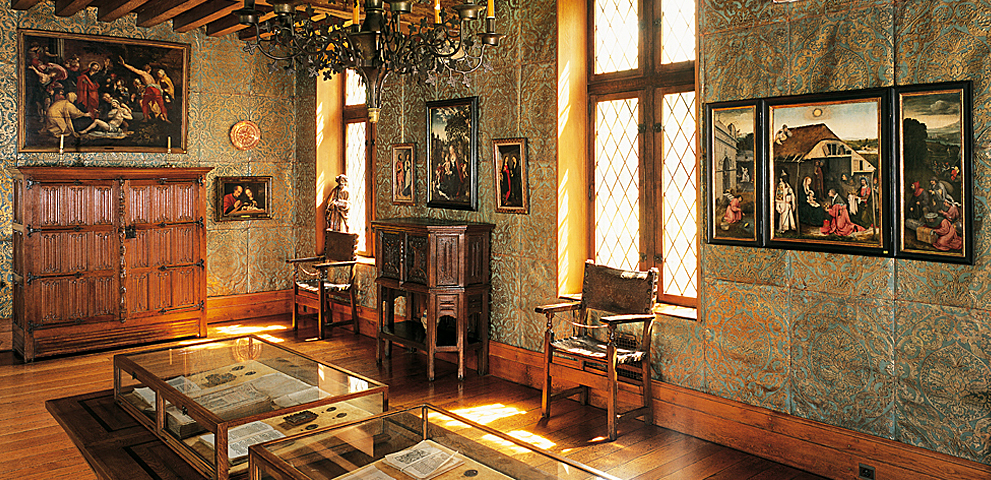Some say he loaded the cannon that Luther fired. Others claim he laid the egg that Luther hatched. Whichever analogy we may prefer, the great ‘Humanist’ scholar, Erasmus of Rotterdam, certainly played a catalytic role in unleashing the Reformation for better or for worse across Europe.
Today is Reformation Day, commemorating Luther’s nailing of 95 theses, objecting to the Roman Catholic Church’s practice of selling indulgences, on the Castle Church door in Wittenberg, Germany, exactly 499 years ago: October 31, 1517.
Supposedly.
Most scholars today believe that scenario to be legend, not fact. Luther himself never wrote about nailing anything up on that day; the first report seems to have come after his death, written by Luther’s colleague Philipp Melanchthon, who only arrived in Wittenberg the following year. What scholars agree Luther did do on October 31 was write to his superiors denouncing the Church’s sale of indulgences. Included in the letter were his 95 theses.
Reformation Day is popularly perceived as the start of the Reformation which drastically reshaped the European landscape. But of course, it did not simply ‘happen’ with Luther’s actions on this day. The Reformation had been brewing over a long chain of events stretching back centuries before and continued deep into the sixteenth century.
Satire
Which brings us back to Erasmus. Last week marked his 550th birthday (in 1466), or maybe his 547th (in 1469), or anything in between–experts differ over the year of his birth. So Saturday–between his birthday and Reformation Day–was a good day to reflect on Erasmus’ role in the Reformation. We organised an excursion from our new Schuman Salon in Brussels to the Erasmus House in Anderlecht, now a Brussels suburbs but 500 years ago a village in the Low Countries countryside.
Erasmus came to stay at this house in 1521 after being hounded out of the university town of Leuven by those who accused him of being a Luther supporter. This was just weeks after the trial of Luther in Worms when he was declared a heretic and excommunicated. Luther had been spirited away by friends in secret to the Wartburg Castle. He had begun his German Bible translation when Erasmus arrived in Anderlecht.
Among the many original manuscripts on display in Anderlecht was the scholar’s most popular and famous satire, Praise of Folly, sometimes seen as the first shot of the Reformation. He wrote it in 1509 while travelling from Italy to England to visit his friend Thomas More, whose name in Latin, Moria, means ‘folly’. The title could also be read therefore as Praise of More. The satire poked fun at the hypocrisies and corruptions of Christian Europe. Erasmus used the clever device of enabling Folly to state the ‘outrageous’ without directly incriminating himself.
Noting that Peter said to the Lord, “We have left everything for you”, Erasmus has Folly boast that “there is scarcely any kind of people who live more at their ease” than the successors of the apostles. “They aren’t interested in being like Christ, but in being unlike each other,” Folly continues. “A great deal of their happiness depends on their name. There are the Benedictines and the Bernardines, the Brigittines, Augustinians, Williamites and Jacobines; as if it weren’t enough to be called Christians.”
Life-source
Another manuscript on display in the Erasmus House was the scholar’s Greek New Testament with a parallel Latin translation–sometimes called the second shot of the Reformation. One reason Erasmus chose to stay in Anderlecht was the collection of Greek manuscripts there which would aid his revision of his New Testament first printed in 1516 in Basel.
This Erasmus saw as the most important work of all his career. The greatest need of his times, he believed, was to return to the roots, the life-source of European life and society: the Gospels, the letters of the apostles and the teachings of the early church fathers. He saw the need to correct mistakes in Jerome’s Latin fourth-century translation, the Vulgate, which was the ‘Authorised’ Bible of the Church.
Erasmus’ work, with parallel Greek and Latin columns, and a commentary pointing out common errors in interpreting the Bible–which could have cost him his life–inspired Luther as he in turn worked away at the German translation. It later inspired William Tyndale’s English translation, and other translations into European languages over the next centuries.
Originally Erasmus gave qualified support to Luther, writing to him in 1519 in a polite and well-disposed tone. However, the German monk’s tactics of confrontation, his intransigence and provocative style alarmed Erasmus who came to see Luther as a threat to the unity of the church. While Erasmus was too Protestant for many Catholics, he remained too Catholic for Protestants like Luther–who eventually called him a ‘secret atheist’.
Luther may well have hatched the egg laid by Erasmus, but–as they say–the result was not the bird Erasmus had expected.
Till next week,



